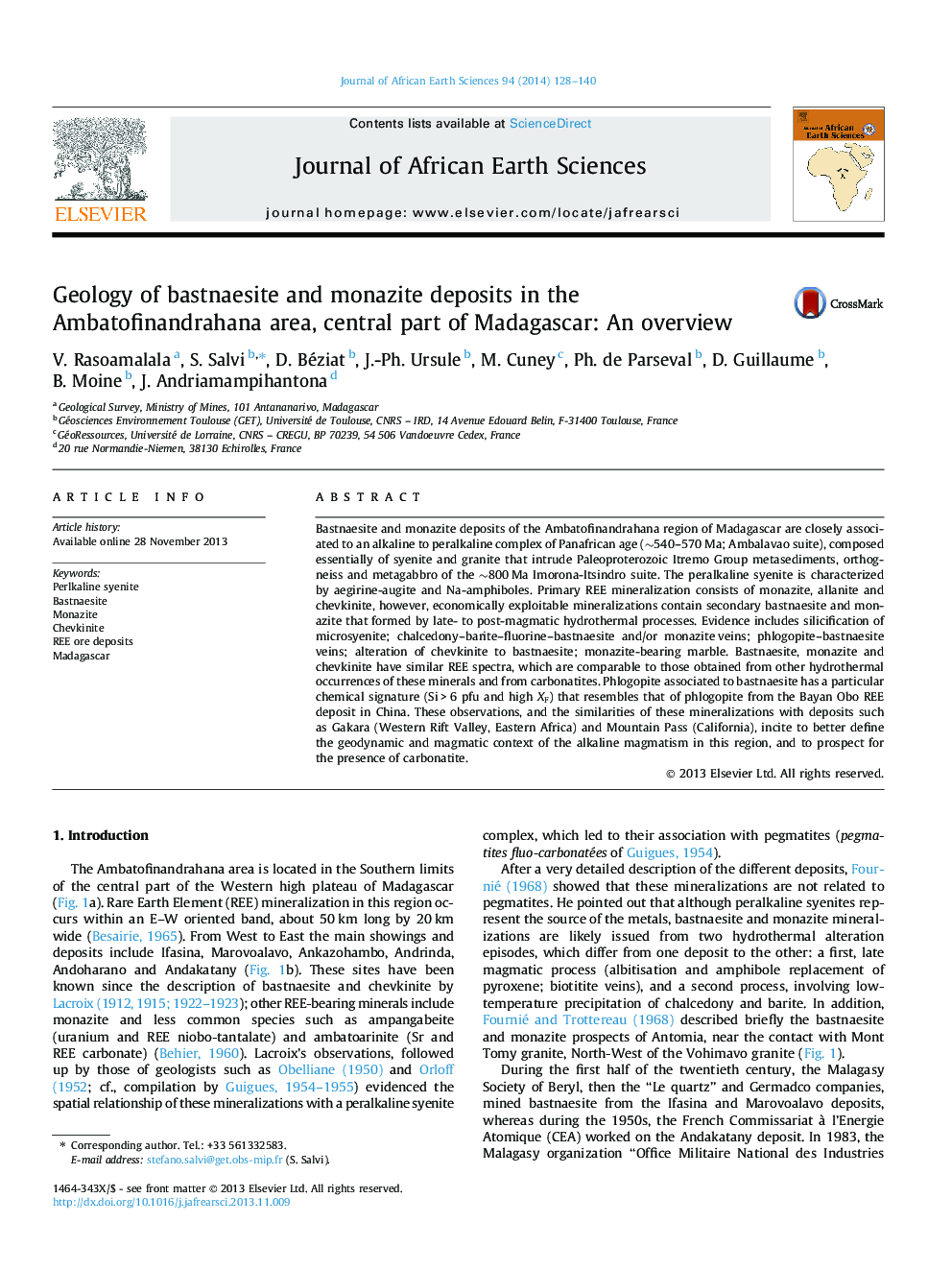| Article ID | Journal | Published Year | Pages | File Type |
|---|---|---|---|---|
| 4728749 | Journal of African Earth Sciences | 2014 | 13 Pages |
Abstract
Bastnaesite and monazite deposits of the Ambatofinandrahana region of Madagascar are closely associated to an alkaline to peralkaline complex of Panafrican age (â¼540-570 Ma; Ambalavao suite), composed essentially of syenite and granite that intrude Paleoproterozoic Itremo Group metasediments, orthogneiss and metagabbro of the â¼800 Ma Imorona-Itsindro suite. The peralkaline syenite is characterized by aegirine-augite and Na-amphiboles. Primary REE mineralization consists of monazite, allanite and chevkinite, however, economically exploitable mineralizations contain secondary bastnaesite and monazite that formed by late- to post-magmatic hydrothermal processes. Evidence includes silicification of microsyenite; chalcedony-barite-fluorine-bastnaesite and/or monazite veins; phlogopite-bastnaesite veins; alteration of chevkinite to bastnaesite; monazite-bearing marble. Bastnaesite, monazite and chevkinite have similar REE spectra, which are comparable to those obtained from other hydrothermal occurrences of these minerals and from carbonatites. Phlogopite associated to bastnaesite has a particular chemical signature (Si > 6 pfu and high XF) that resembles that of phlogopite from the Bayan Obo REE deposit in China. These observations, and the similarities of these mineralizations with deposits such as Gakara (Western Rift Valley, Eastern Africa) and Mountain Pass (California), incite to better define the geodynamic and magmatic context of the alkaline magmatism in this region, and to prospect for the presence of carbonatite.
Keywords
Related Topics
Physical Sciences and Engineering
Earth and Planetary Sciences
Geology
Authors
V. Rasoamalala, S. Salvi, D. Béziat, J.-Ph. Ursule, M. Cuney, Ph. de Parseval, D. Guillaume, B. Moine, J. Andriamampihantona,
